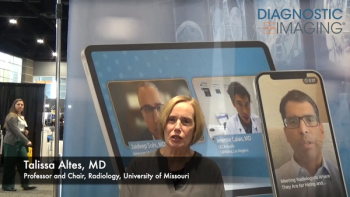
COVID-19 in the CT Scanner
SARS-CoV-2 virus found inside CT scanner used on high volume of patients with viral infection.
Even with all the disinfection protocols and social distancing guidelines in place, a recent event has shown that SARS-CoV-2 – the virus that causes COVID-19 – can infiltrate CT scanners used to image patients suspected of viral infection.
But, there’s a silver lining – the virus was contained to the machine’s inward airflow filter.
In an article published online Oct. 1 in
“Our study found SARS-CoV-2 RNA only in the inward airflow filter. All other gantry sampling sites were free of SARS-CoV-2 RNA,” said Dr. João Matos from the University of Genoa in Italy. “These results are encouraging since this filter may act as a partial barrier to the virus.”
The scanner in question was used over 26 days in 180 consecutive exams for patients who were confirmed to be positive for the virus. The team led by Matos opened the gantry of their 16-slice CT scanner to see whether it was contaminated with the virus. They took samples from eight different components of the machine: gantry case, gantry motor, X-ray tube, X-ray tube filter, outflow fan, fan grid, detectors, and inward airflow filter.
They ran each sample through the RT-PCR test. Alongside looking for SARS-CoV-2, the team analyzed the samples for bacterial and fungal infections, as well. Based on the RT-PCR results, the only component with any evidence of SARS-CoV-2 was the inward airflow filter. Everything else was clean.
“Even after 26 days of intensive use, conventional sanitization measures were most probably successful in preventing large-scale contamination of the CT scanner,” the team said. “SARS-CoV-2 RNA was found internally in the CT gantry only in the inward airflow filter. All remaining CT gantry zones were devoid of SARS-CoV-2 RNA. No bacterial or fungal cultures were obtained from internal CT gantry sampling zones.”
For more coverage based on industry expert insights and research, subscribe to the Diagnostic Imaging e-newsletter
Newsletter
Stay at the forefront of radiology with the Diagnostic Imaging newsletter, delivering the latest news, clinical insights, and imaging advancements for today’s radiologists.




























